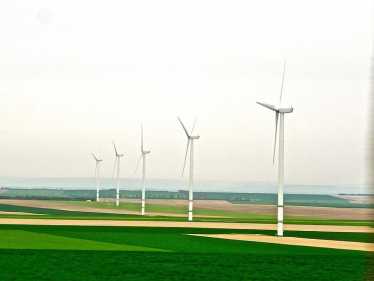
Solar power is often associated with solar cells on your roof, but here are many ways in which to exploit that never-ending energy of our little star. Artificial leaves have quite a lengthy history, here described with platinum catalysts,as used in labs in Colorado and California.
The leaf has been more admired recently than ever before, by the chemists struggling to use sunlight energy to prepare hydrogen, oxygen or even electricity. The catalytic equivalent of chlorophyll, which promotes the conversions first of water into oxygen and then hydrogen into carbohydrate, is slowly being worked out.
At the moment a doping of rhodium on a strontium salt of titanium in the form of Rh-SrTiO3is the less expensive but capable option. The photocatalyst is pasted onto a transparent indium tin oxide electrode to produce a semiconductor. The gases hydrogen and oxygen are given off. An artificial leaf is now being prepared to provide the much-vaunted hydrogen fuel that we have been going on aboutin the latest cars.
Peidong Yang, Bin Liu, Cheng-Hao Wu and Jianwei Miao from the Berkeley Campus of University of California and the Nanyang Technological University in Singapore have kind of littlegreen
leaf, made into nanowire form to absorb as much of the light energy as possible, when it is placed in water. The lower cost of their leaf means it can be converted into a full production module very soon, utilising solution synthesis and vacuum filtration. It is also free standing and needs no wiring up or external devices to increase costs. The attraction is the diversion of hydrogen production from the natural gas industry to an almost carbon free production, using only solar energy
The paper can be found in the journal, ACS Nano, with the title -All Inorganic Semiconductor Nanowire Mesh for Direct Solar Water Splitting. Efficiency, durability and the lower cost ensure that this technology is likely to be attractive to those wanting to cut our vast carbon footprint. The semiconductor nanomesh provides an unassisted solar-driven splitting of water. It is to be hoped that the reputation of California as a leader in solar power industries encourages many companies to take on the challenge of providing our new hydrogen cars and other vehicles with the really clean fuel they need.






